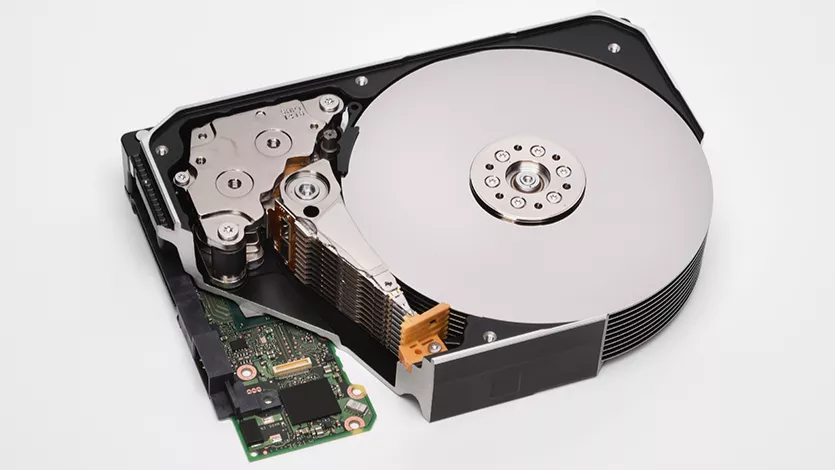A piece from Pure Storage’s Shawn Rosemarin, VP R&D (Customer Engineering unit), has been picked up by mainstream tech press as he predicts that no more hard drives will be sold after 2028 (opens in new tab) (so from 2029 onwards). The rising cost of electricity will likely be the last nail in the coffin of hard disk drive proliferation in hyperscalers although the impending arrival of PLC (penta-level cell) technology and the absurdly low Terabyte price for SSD could play a role there.
Because just in case you were wondering, it’s all about enterprise customers, not end users and consumers like you and me. Pure Storage, of course, has a vested interest in moving and encouraging everyone to move beyond hard disk drives as it sells AFA (All Flash Array) storage, equipped with its own proprietary SSD called DFM (for Direct Flash Array).
It plans to introduce 300TB models by 2026 and I wouldn’t bet against a 600TB model coming by 2029. Over the past few years, observers may have noticed a trend; economies of scale means that it is hyperscalers – not the consumer market – that’s driving innovation in hard drives. That would explain why 2.5-inch hard drives have been stuck at 5TB for, well, seven years now while their 3.5-inch brethren have reached 30TB.
And as I noted in this article, the portable hard drives, the smaller ones (not external hard drives which use larger models), could disappear as early as next year as the average price of large internal SSDs continues to fall with no end in sight. Currently the cheapest 2TB SSD costs around $30 per TB compared to $25 for a 2TB portable HDD.
Consumers left lingering
Innovation in consumer hard drives has already stalled: Toshiba, one of the big three, doesn’t sell to customers while Seagate’s largest Barracuda drive, an 8TB model, was launched in 2017 (ed: Seagate launched the Firecuda, an 8TB hard drive for gamers, in 2022 but it’s likely a slightly modified version).
As for Western Digital, capacity also stalled at 8TB for its consumer range (Blue, launched in 2021) although it has a thriving WD_Black gaming hard drive. So once, an 8TB SSD reaches $100 that will be the end of traditional consumer hard drives.
Indeed, should you want higher capacities, one needs to buy from enterprise, prosumer or business range for larger capacities but even that won’t last (Exos, UltraStar .
In an exclusive interview with TR Pro, Western Digital’s SVP of HDD Product Management, Ravi Pendekanti, bluntly told me that the reason why we still can’t buy 26TB hard drives (in that case the 26TB UltraSMR HDDs) is because these are host-managed drives that are not drop-in replacements for CMR HDDs.
They require host software and stack modification with sequentialized data streams and error handling for random writes. In other words, the higher the capacities, the more enterprise-ready technologies will be added in the future that will make it expensive and complicated for users in the consumer world to adopt. SAS drives or NVMe HDDs anyone?
Where does that leave the big three?
Seagate and Western Digital have long hedged their bets as the writing was on the wall for hard disk drives. Seagate already sells SSDs and Western Digital is a major player thanks to its acquisition of Sandisk and its partnership with Kioxia. Toshiba, on the other hand, has been quite coy about its SSD plans if any.
There will always be some demand for large capacity hard drives for a niche market for prosumers (primarily NAS) and this will likely be serviced for the foreseeable future by hard drive recyclers like MaxDigitalData or Water Panther that refurbished hard disk drives from hyperscalers but offer full warranty and a cheaper price tag.
There’s enough hard drives in data centers across the world for this ecosystem to thrive for the foreseeable future until hyperscalers decide to move on to something else, be it DNA, SSD or something else.





